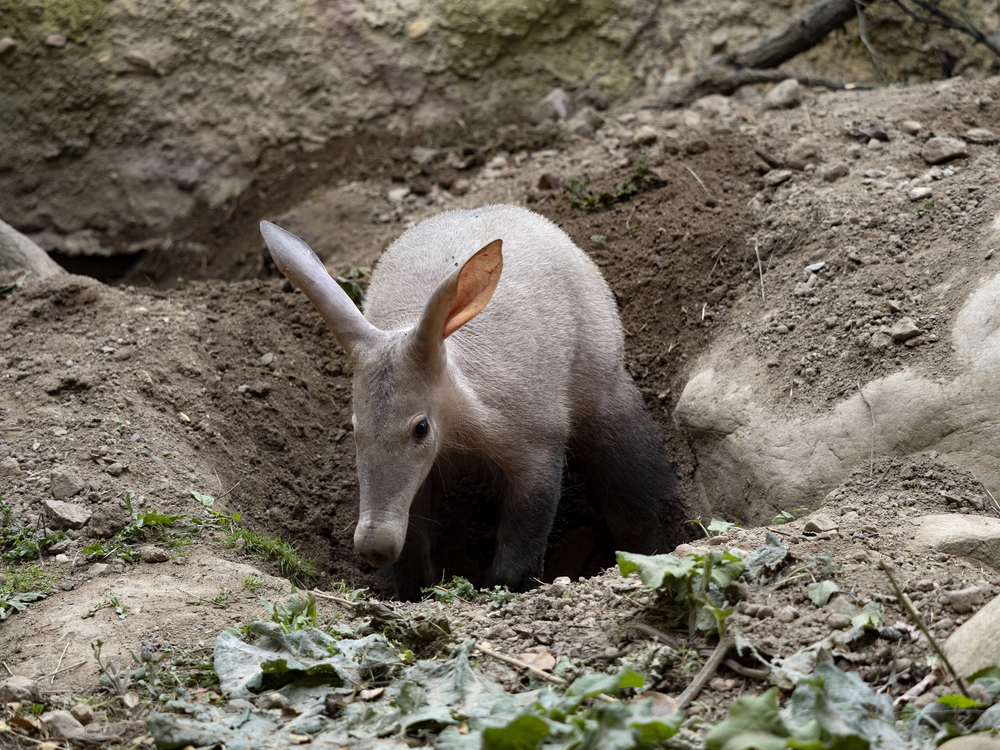The effects of global warming may prove counter-intuitive. A clue comes from Aardvarks in their Sub-Saharan habitats. Climate change is making conditions in the semi-arid regions of aardvark distribution hotter and drier. Yet, animals may die of cold with global warming. Perversely, that may be the global warming threat to aardvarks.
Aardvarks – nocturnal animals built for burrowing
One of the earliest books I can recall reading as a child was an encyclopaedia. The first entry was aardvark, a very unusual word in English. After all, it starts with a double A. Aardvark is the Afrikaans word for “earth pig” – a curious-looking creature about the size of a pig.

Aardvarks have a snout that looks very much like an elongated pig’s nose. But its appearance is even more bizarre. Its ears resemble those of a rabbit or a hare. No surprise that with such a nose and ears, aardvarks have acute senses of smell and hearing.
Built for life in Sub-Saharan landscapes, aardvarks (Orycteropus afer) burrow into the ground. It has an acute sense of sound and smell. Its front paws have four digits with claws shaped like shovels, used for digging deep into termite nests. Then, it uses its nose and long sticky tongue to sniff out and grab its primary food source – termites and ants—thousands of them at a time.
The water problem and keeping cool
Aardvarks rarely drink water. The termites and ants provide food and also 90% of the water they need. This dependency is critical. So, if global warming affects the termites, then it will also impact the aardvarks. Notably, it affects the aardvark’s ability to regulate body heat.
First, the population of termites falls during periods of drought. Secondly, large mammals often use evaporative cooling (e.g., sweating, panting) to regulate their body temperature. The hotter it gets, the more they lose water through evaporative cooling.
One response to increasing temperatures is to shift activity to cooler times of the day. Aardvarks are nocturnal, remaining in burrows during the day and becoming active at night. Yet, recent evidence suggests that when food availability is compromised, they are increasingly active in the daytime, exposing them to daytime temperatures.
Shift from night-time to day-time activity
This changing pattern of behaviour puts the Aardvarks at greater risk. Aardvarks are heterothermic, allowing their temperatures to fluctuate and conserve energy, particularly in the winter months. For example, a study showed that aardvarks would also relax body temperature regulation during a summer drought.
A lethal cycle
In severe conditions, aardvarks can no longer compensate for reduced food availability, creating a lethal cycle. Also, loss of body fat would compromise the capacity of the aardvarks to respond metabolically to cold. They would react by retreating to warmer burrows and exploiting ambient warmth during the day but with reduced activity.
Less activity means less food. Some may survive, but others will perish. If they don’t die in the summer, they might do so in winter when they die from being too cold.
So, does it matter? Aardvarks play a vital role in habitat construction. In addition, their digging provides refuge for other animals. Thus, the global warming threat to aardvarks is part of a bigger picture. Life is a web of dependency.
https://www.awf.org/wildlife-conservation/aardvark

